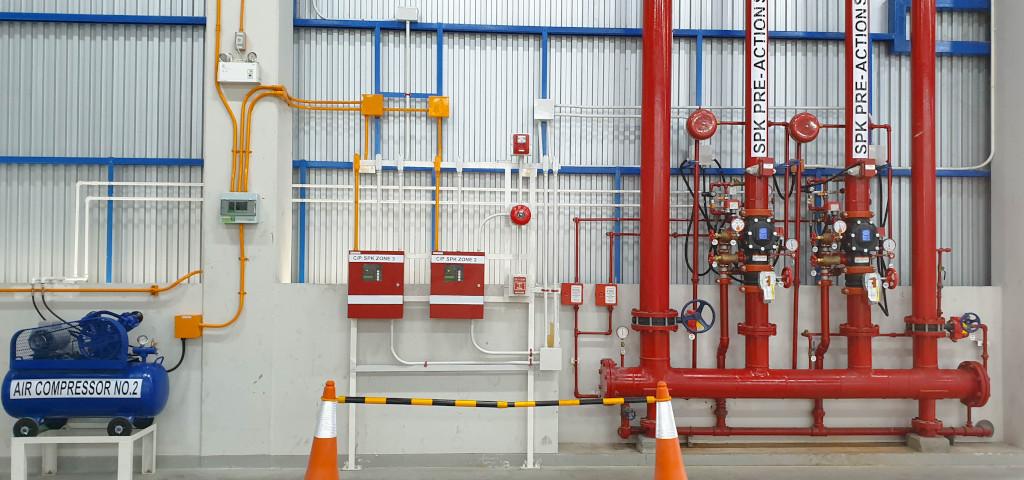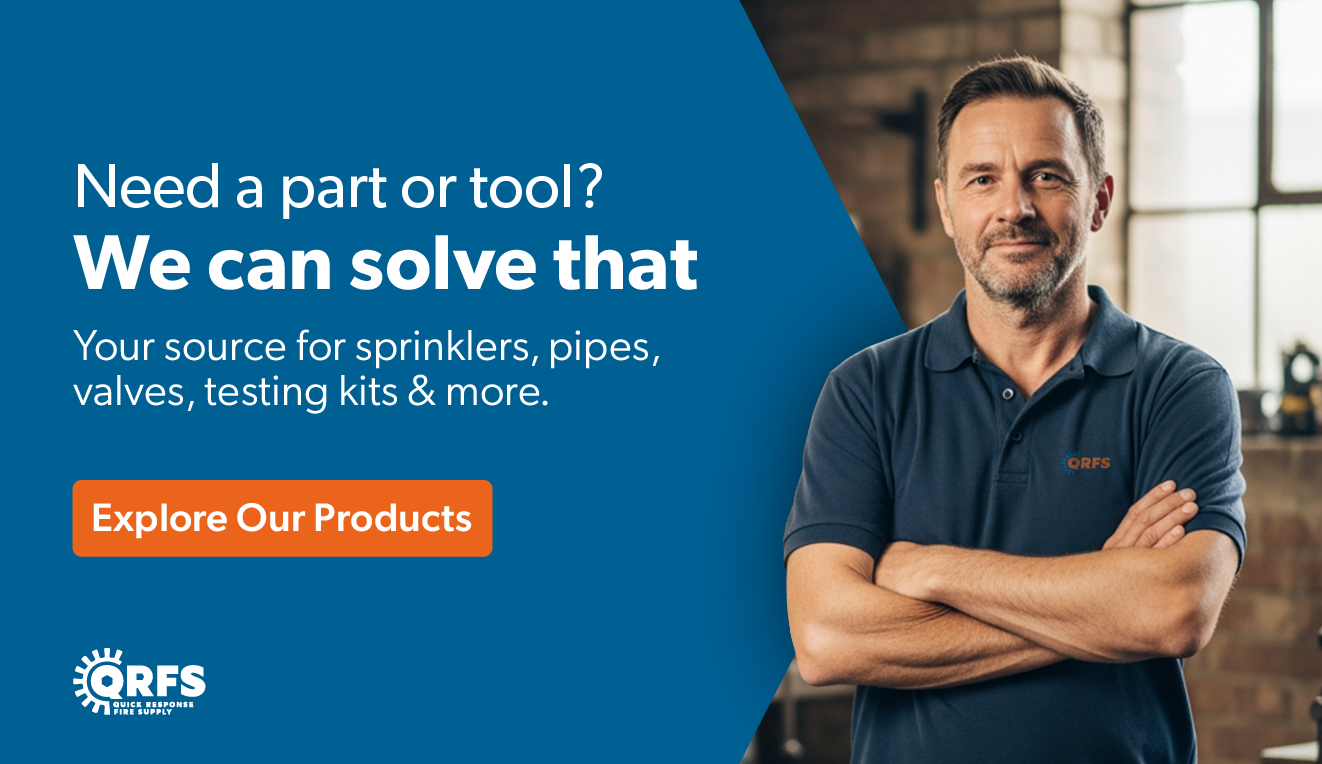An air maintenance device ensures the correct air pressure and flow in preaction and dry sprinkler systems
Dry and preaction fire sprinkler systems both rely on a drop in pressurized air or nitrogen to release water to fire sprinklers. A reliable source of gas—be it an air compressor, shop air, compressed air tanks, or nitrogen canisters—is essential to the operation of these systems. However, a good gas source alone may not be enough. The pressure and flow rates of air or nitrogen need to be regulated for the integrity and function of the system. This is where an air maintenance device (AMD), also called an “air maintenance trim assembly,” comes into play.
These devices, made up of valves, gauges, and pressure regulators, ensure that the air or nitrogen flowing into sprinkler pipes has the right pressure and rate.
This article is your guide to:
- Why air maintenance devices are needed in dry and preaction systems
- How AMDs work
- How to select an air maintenance device
Note: For simplicity, we’ll often use the term “air” to describe the gas filling the pipes in air or nitrogen systems, though the latter isn’t technically “air.”
QRFS can provide air maintenance devices for your dry and preaction sprinkler system needs. Contact our customer service team today to place an order.
Why dry and preaction systems have AMDs: pressure and flow regulation
AMDs perform two key functions: they control air pressure (keeping it from being too high or too low) and they control the rate of air flow. Dry systems and preaction systems can both rely heavily on air pressure and, thus, typically use AMDs.
In potentially cold settings, such as sub-freezing cold storage areas or outdoor parking, dry pipe systems use gas instead of water in most of their pipes to avoid freezing. The pipes exposed to cold air are filled with pressurized air or nitrogen, and this pressure holds a dry pipe valve shut in a heated space near the pressurized water supply. A sudden drop in air pressure—as should occur when a sprinkler activates and opens—allows the pressurized water supply to open the dry pipe valve and flood into the pipe network.
Two types of air supply problems can cause failure in a dry system: too little pressure and too much pressure. Because air pressure controls the valve, a low PSI can cause the dry valve to open without sprinkler activation, flooding the system and risking freezing pipes. Too much air is a separate problem. As NFPA 13: Standard for the Installation of Sprinkler Systems (2025 edition) explains, excess pressure in a dry system can damage the dry valve or prevent it from opening during a fire (8.2.9.4 Enhanced Content).
Pressure relief valves are an important way to avoid excess pressure problems, but AMDs also prevent overpressure by managing pressure passively or shutting off air compressors electronically. Any dry system supplied by a compressor with a capacity of more than 5.5 cubic feet of air per minute at 10 PSI needs an AMD, per NFPA 13 (8.2.8.2). AMDs also use restrictors to prevent air from being added to sprinkler systems faster than it can discharge from an open sprinkler. If the air cannot escape more quickly than it’s added, the dry valve won’t operate. We’ll cover more on both of these features in the next section.
Preaction systems are similar to dry systems in that the sprinkler pipes are dry until a preaction valve opens to admit water. The preaction valve can also, like a dry valve, be partially or totally controlled by air pressure, depending on the type of system—and can thus be subject to similar rules as dry systems (A.8.3.2.4 Enhanced Content).
- Non-interlock preaction systems open a preaction valve at the water supply and flood the pipes with water if a sprinkler head’s heat-sensitive element breaks and drops the air pressure or a separate device (e.g., a smoke detector) sends an electrical signal.
- Single-interlock preaction systems release a preaction valve and flood the pipes only if a separate detection device (e.g., a smoke detector) tells the valve to do so.
- Double-interlock preaction systems only release the water and flood the pipes if a detection device says so and a fire sprinkler head activates/opens.
Non-interlock preaction systems serve a similar purpose to dry systems, preventing frozen pipes in cold areas. They are often used because the dry pipe valves and dry systems have NFPA 13-mandated capacity and size limitations; so, a non-interlock preaction system could be thought of as a very large dry system with additional functionality and parts. The other two types of preaction systems utilize additional activation conditions to prevent unnecessary, false-alarm water discharge in areas such as museums, libraries, or computer or server rooms, where water damage could be very costly.
All preaction systems also differ from dry systems in their mechanism, being at least partially controlled by other inputs, such as heat or smoke detection, in addition to air pressure. Nevertheless, preaction systems still rely on air pressure in the pipes—so, they typically need AMDs to regulate it.
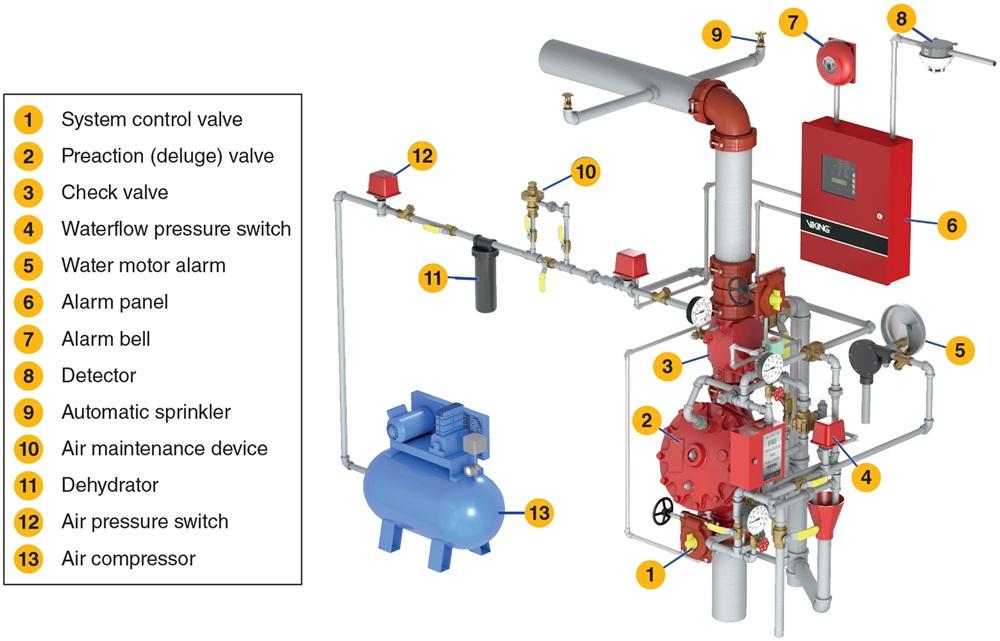
How an air maintenance device works
As we mentioned, AMDs ensure maintaining the correct air pressure—neither too high nor too low—in dry and preaction systems. Exactly how they do this depends on the type of air supply the system uses. To that end, there are two main kinds of AMDS:
- Pressure-reducing AMDs regulate the pressure and flow from air holding tanks, nitrogen canisters, or shop air without electric signaling.
- Compressor-control AMDs use electric signals to control air compressors as needed.
Here’s more detail on each:
Pressure-reducing air maintenance devices
Pressure-reducing AMDs manage air pressure and flow passively, without electronic control. They are typically installed downstream of air receivers (aka “air holding tanks”) or shop air sources. Those air sources ultimately get their pressure from an air compressor, but that compressor has its own pressure-control and shut-off circuitry.
Some pressure-reducing AMDs, such as General Air’s AMD-1, are designed for direct connection to air compressors. This is only possible for air compressors that have their own pressure switch circuitry. Ultimately, pressure-reducing AMDs regulate pressure and airflow because compressor control is handled elsewhere.
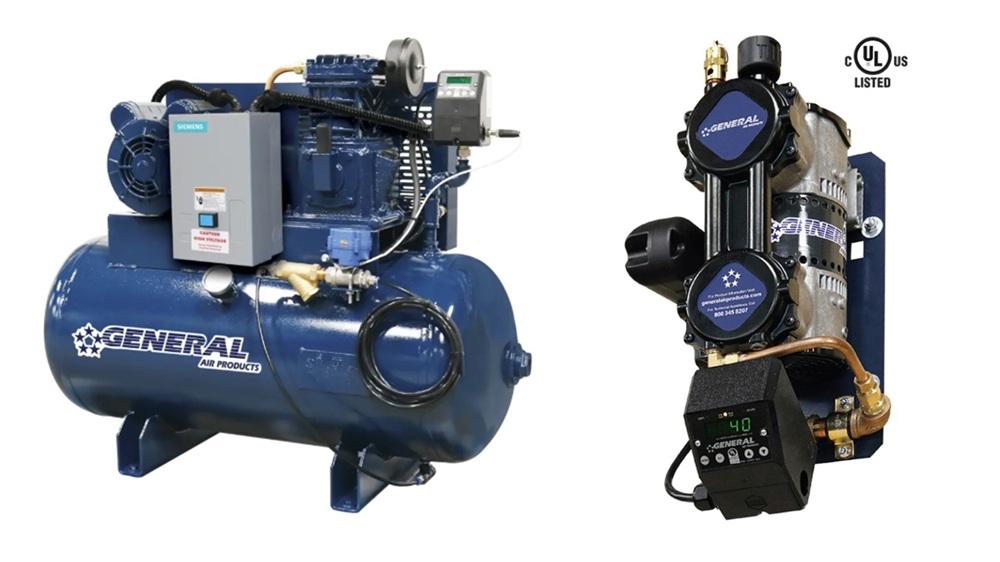
To that end, pressure-reducing AMDs typically consist of:
- An adjustable pressure-reducing valve
- A pressure gauge
- A screen to filter debris
- A restrictor fitting to control air flow
- Shut-off valves
- A bypass pass with a control valve (for filling the system—NFPA 13 8.2.7)
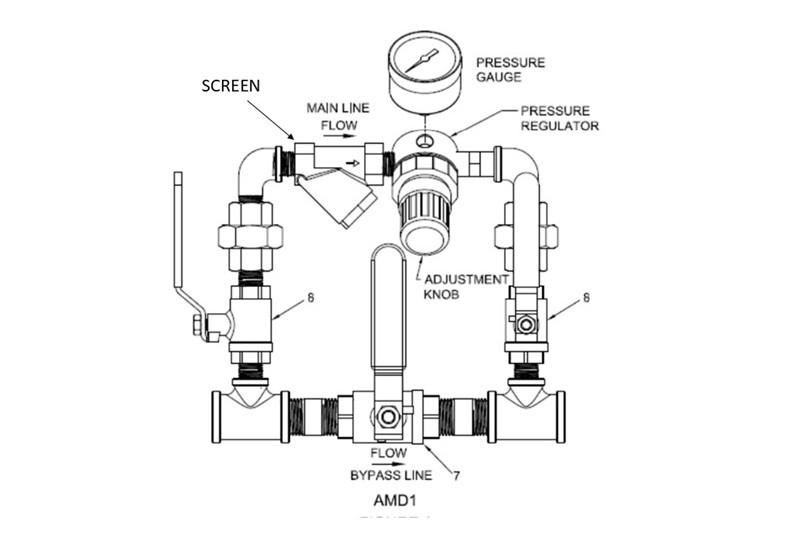
Some specialized pressure-reducing AMDs are explicitly designed for use with ultra-high-pressure nitrogen canisters. Again, nitrogen is used in place of normal oxygen-containing air to significantly mitigate corrosion in dry pipe systems.
Compressor-control air maintenance devices
Some dry and preaction systems don’t use air holding receivers of any kind to store pressure, instead relying on dedicated fire-rated air compressors to feed the system directly. Any system supplied by a compressor without its own pressure-control circuitry needs a compressor-control AMD. A pressure switch in the AMD monitors the pipe pressure; the compressor starts up when the system drops below the “cut-in pressure” and turns off when it reaches the “cut-out pressure.”

Selecting an AMD is essential for the function of your dry or preaction system!
Selecting an AMD is essential for the function of your dry or preaction system!
Choosing an air maintenance device isn’t difficult as long as you understand your sprinkler system and its air supply. The decision involves three key factors:
- Check your air supply type to determine if you need a pressure-reducing or compressor-control AMD. As previously discussed, most standalone compressors require compressor-control AMDs, while tank-mounted compressors or shop air typically only need pressure-reducing AMDs.
- Check your air supply pressure to ensure an AMD is capable of handling the incoming pressure. Every AMD has a maximum inlet pressure—make sure the air supply doesn’t exceed that limit. If your air compressor is small enough, you might not even need one!
- Check your system pressure requirements to ensure that an AMD can provide the correct pressure. Most of these devices have field-adjustable pressure regulators, but these come in a defined range.
Once you have this information, it’s easy to locate a good AMD. Victaulic, Tyco, Viking, Reliable, and General Air all offer high-quality air maintenance devices that are listed and approved for fire service.
If you’d like to purchase an air maintenance device, get in touch with our customer service team. You can also browse our extensive selection of fire sprinklers and other fire protection equipment for your building and system.
This blog was originally posted at blog.qrfs.com. If this article helped you, check us out on X @QuickResponseFS.


